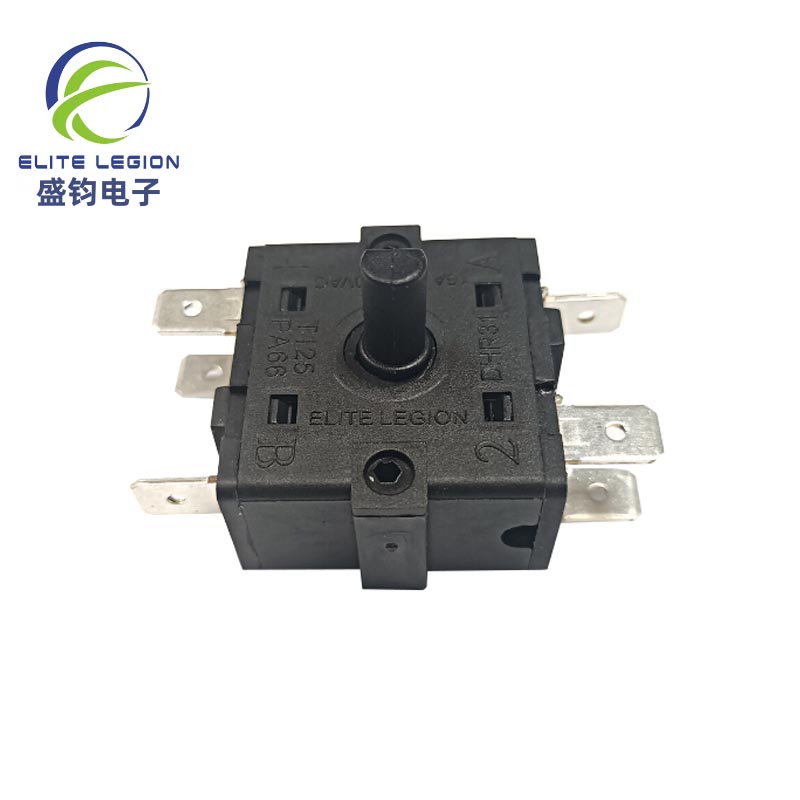- English
- Esperanto
- icelandic
- беларускі
- O'zbek
- Hawaiian
- Español
- Português
- русский
- Français
- 日本語
- Deutsch
- tiếng Việt
- Italiano
- Nederlands
- ภาษาไทย
- Polski
- 한국어
- Svenska
- magyar
- Malay
- বাংলা ভাষার
- Dansk
- Suomi
- हिन्दी
- Pilipino
- Türkçe
- Gaeilge
- العربية
- Indonesia
- Norsk
- český
- ελληνικά
- український
- Javanese
- नेपाली
- Burmese
- български
- ລາວ
- Latine
- Қазақша
- Euskal
- Azərbaycan
- Lietuvos
- Eesti Keel
- Română
- Srpski језик
- فارسی
- தமிழ்
- తెలుగు
How to upgrade
2024-10-02

What are the advantages of using Rotary Switches?
Rotary switches offer many advantages over other types of switches. Some of their key benefits include:- They are easy to operate and provide precise control over the device's operation.
- They can handle high currents and voltages, making them suitable for industrial applications.
- They have a compact design, which makes them easy to integrate into the equipment without taking up too much space.
- They are durable and can withstand heavy usage for a long time.
What are the different types of Rotary Switches available?
There are many types of rotary switches available, each with its own specific features. Some of the commonly used rotary switches include:- Single-deck rotary switches - These switches have only one layer of contacts and are used to control a single circuit.
- Multi-deck rotary switches - These switches have multiple layers of contacts and can control multiple circuits at once.
- Stepped rotary switches - These switches have a fixed number of positions and clicks into place when turned.
- Continuously variable rotary switches - These switches have a smooth rotary motion, allowing for continuous variation of the device's parameters.
How to upgrade your equipment using Rotary Switches?
Upgrading your equipment using Rotary Switches is a simple process. Follow these steps to get started:- Determine your equipment's control requirements.
- Select the appropriate Rotary Switch based on your equipment's electrical requirements and the switch's operating parameters.
- Install the Rotary Switch into your equipment as per the manufacturer's instructions.
- Test the Rotary Switch to ensure that it's functioning correctly and provides accurate control over the equipment's operation.
- Enjoy the improved performance and efficiency of your upgraded equipment.
In conclusion, Dongguan Sheng Jun Electronic Co., Ltd. is a leading manufacturer and supplier of high-quality Rotary Switches at competitive prices. With years of experience in the industry, our team of skilled professionals is committed to providing our customers with the best possible solutions to meet their needs and requirements. To learn more about our products and services, visit our website at https://www.legionswitch.com. For any inquiries or questions, please feel free to contact us at legion@dglegion.com.
Research Papers:
1. Yu, J., & Kim, S. (2019). Design of a rotary switch for ergonomic keyboard. International Journal of Precision Engineering and Manufacturing, 20(4), 711-717.
2. Sen, L., & Das, K. (2016). Rotary switch industry in India: challenges and opportunities. Indian Journal of Research in Management Studies and Information Technology, 3(2), 35-44.
3. Xi, G. S., & Xie, K. (2015). Reliability test of wide temperature range rotary switch. Journal of Electronic Measurement and Instrumentation, 29(2), 200-205.
4. Cho, Y. J., & Lee, J. S. (2018). A study on the application of a stepper motor to the rotary switch. Journal of the Korean Society of Precision Engineering, 35(2), 171-177.
5. Lin, Y. C., & Huang, Y. Z. (2017). Analysis of contact resistance in a high-current rotary switch. Journal of Electronic Science and Technology, 15(2), 101-105.
6. Lee, K. J., & Shin, D. Y. (2019). Development of a 360-degree continuously variable rotary switch for robot control. International Journal of Control, Automation, and Systems, 17(6), 1515-1522.
7. Guo, Q., & Li, C. (2016). Accuracy of angular positioning in a stepped rotary switch. Measurement, 90, 126-132.
8. Zhang, X., & Gao, F. (2018). A novel MEMS-based rotary switch for RF microsystem applications. IEEE Microwave and Wireless Components Letters, 28(6), 475-477.
9. Baek, C. H., & Lim, J. H. (2015). Effect of thermal expansion on the contact resistance of a rotary switch. Journal of Mechanical Science and Technology, 29(1), 181-185.
10. Liu, Y., & Lu, Q. (2017). Modelling of the rotary switch based on the Monte Carlo method. Transactions of Nanjing University of Aeronautics and Astronautics, 34(3), 327-333.





